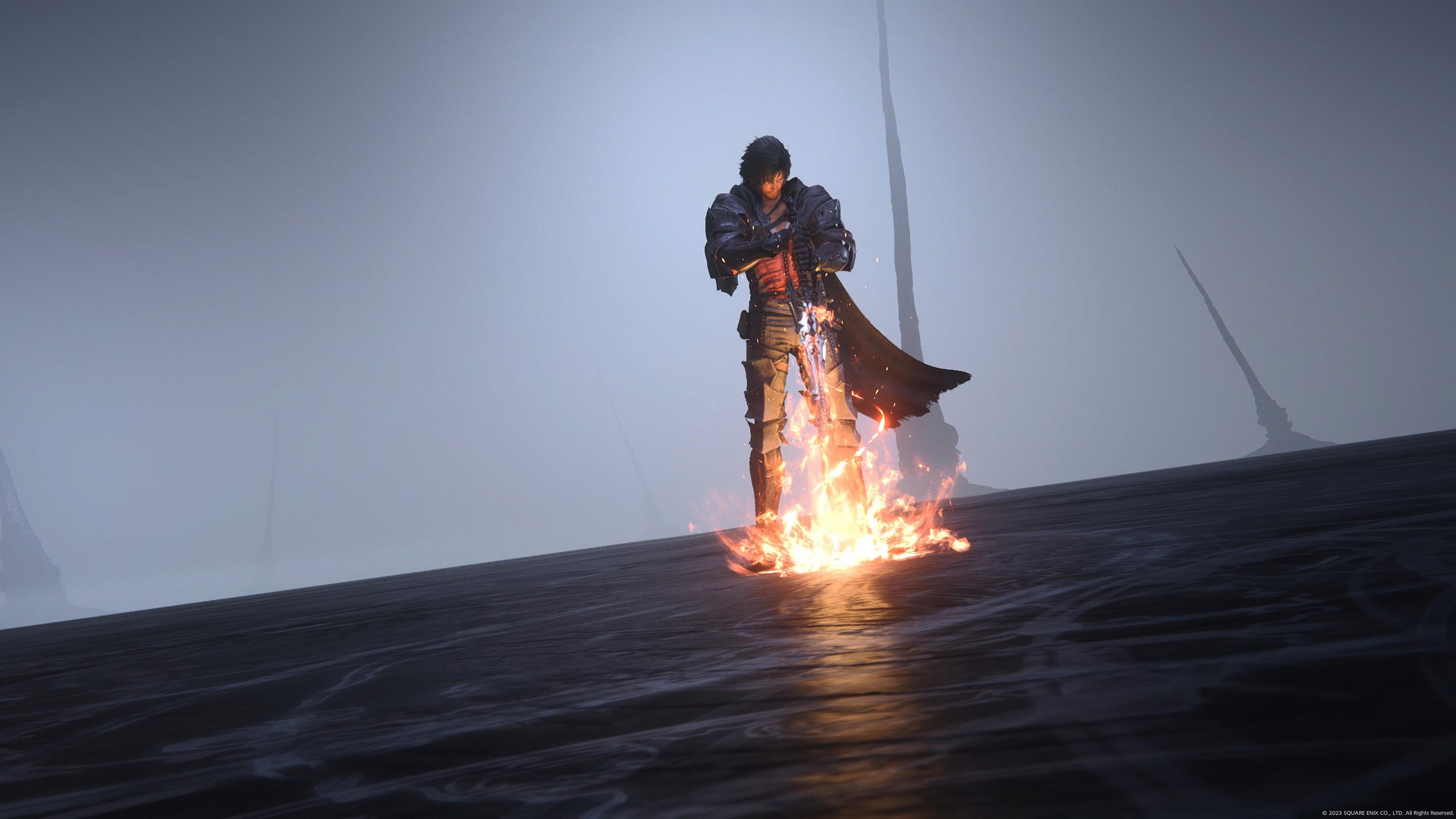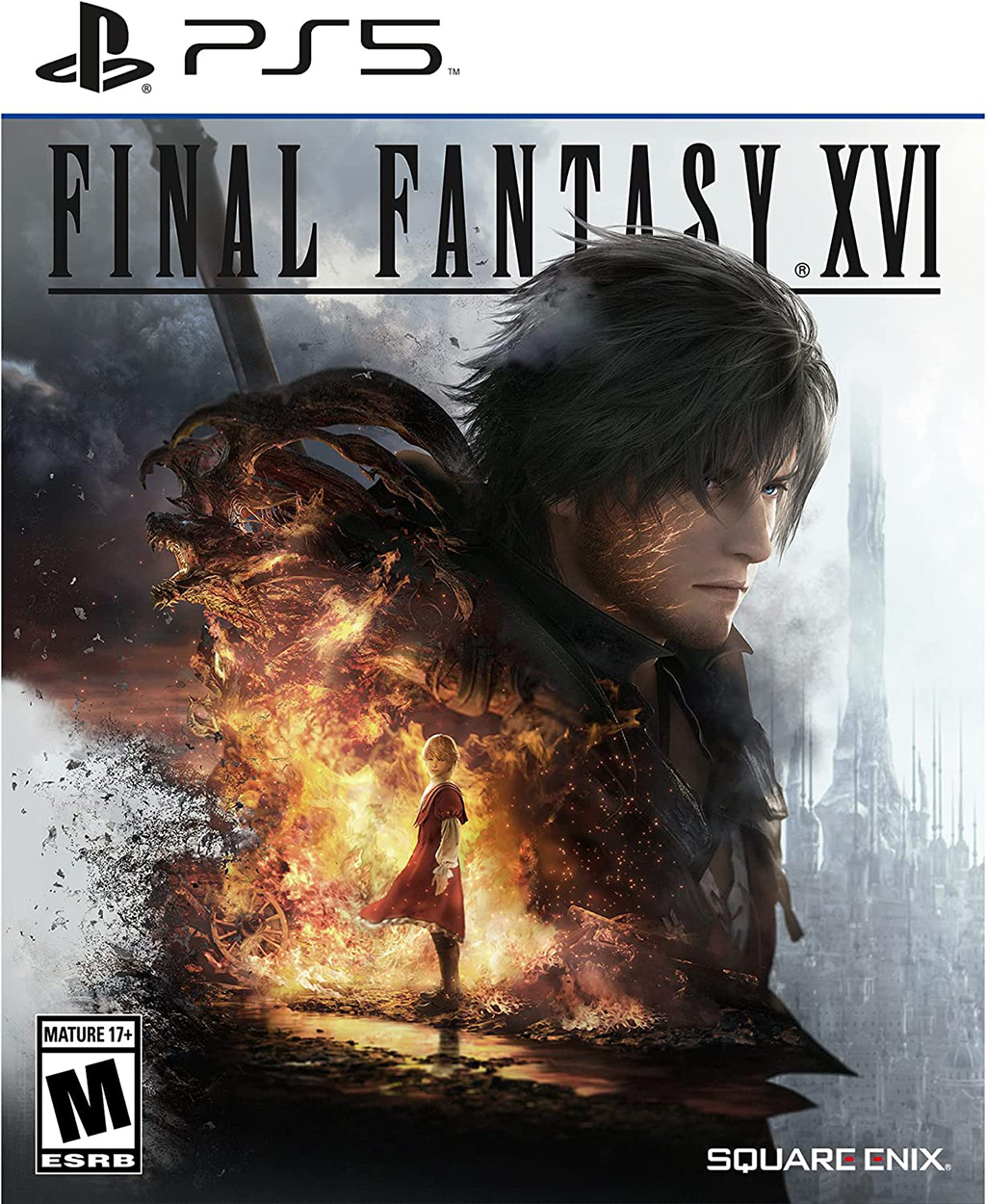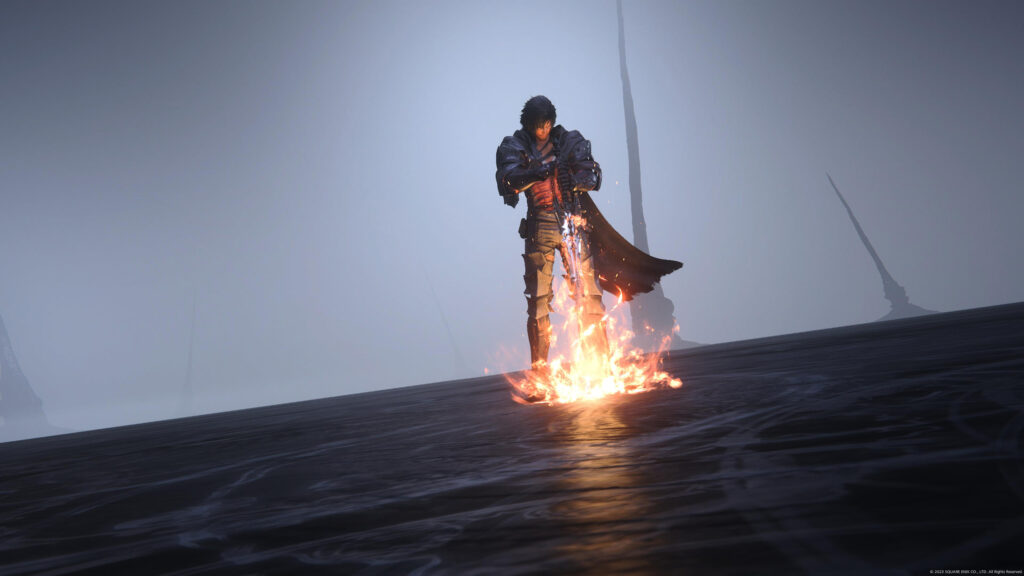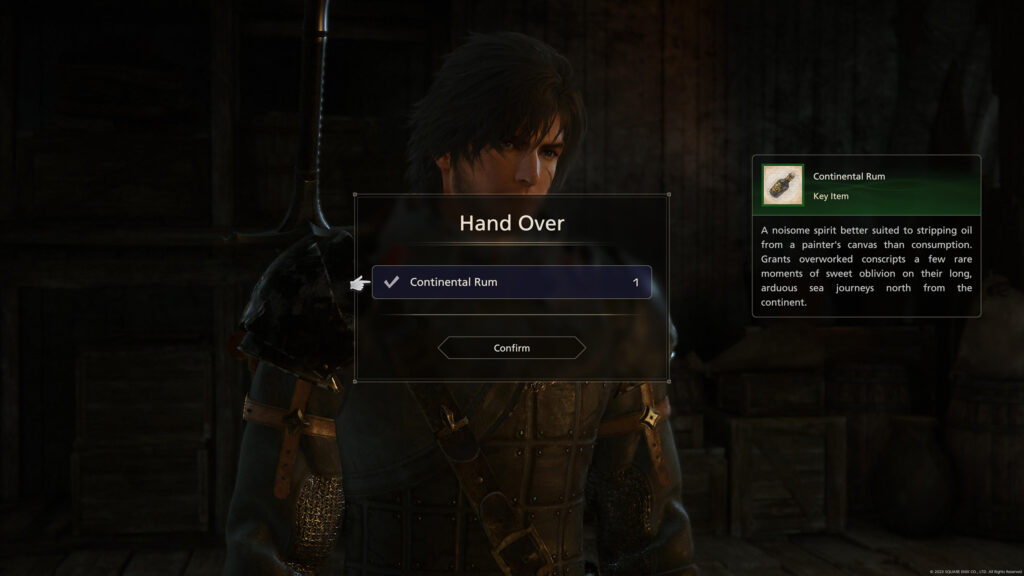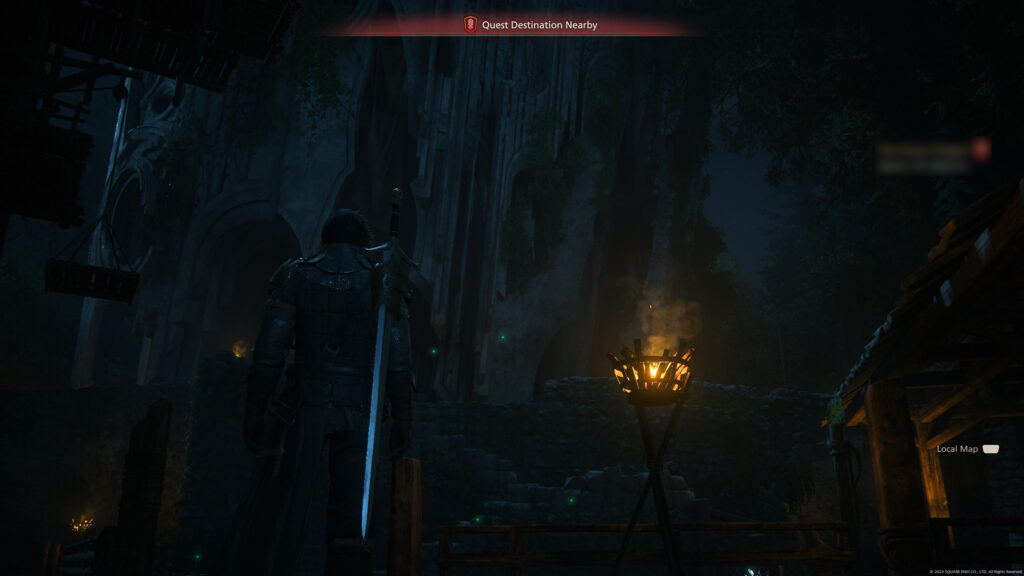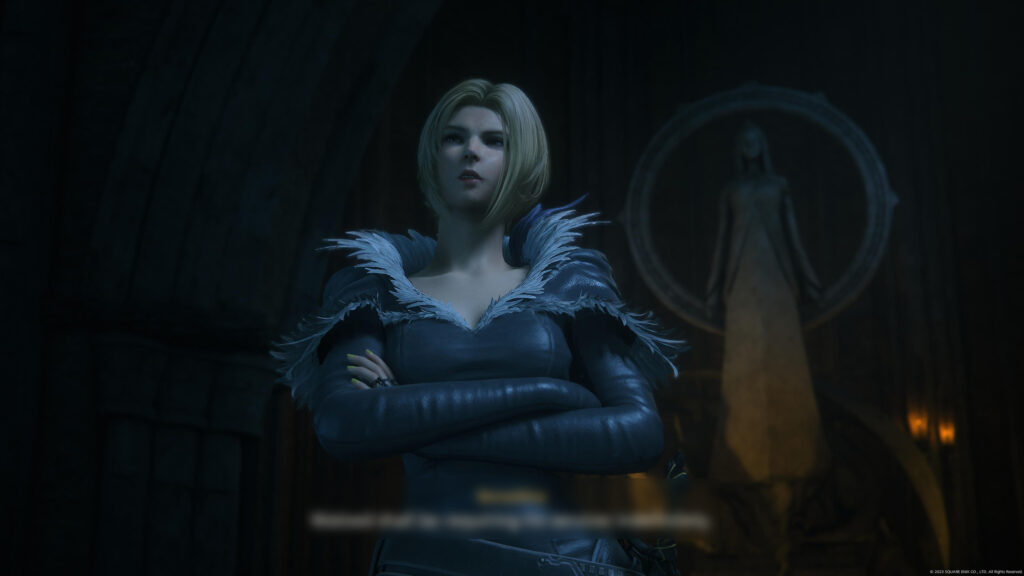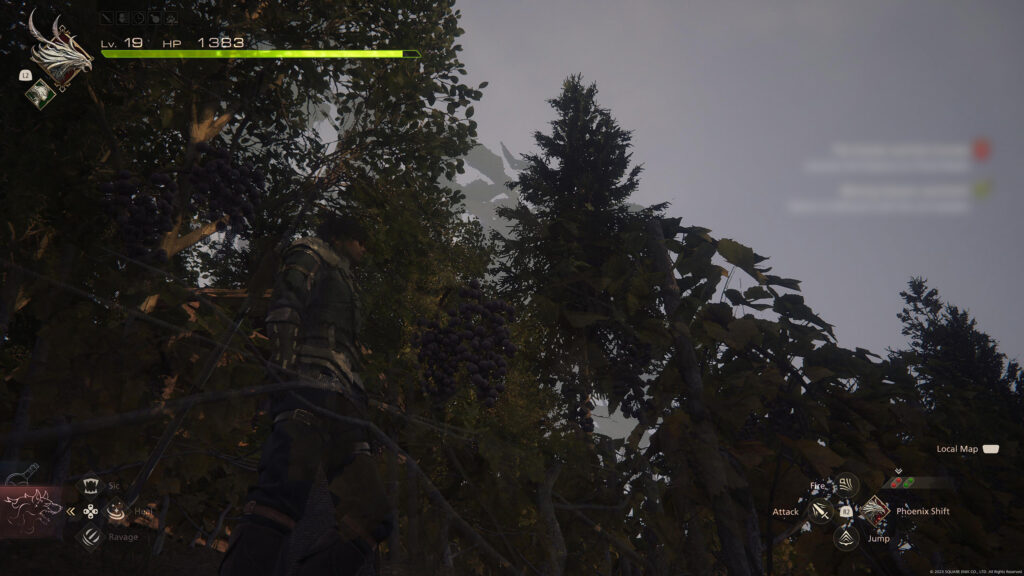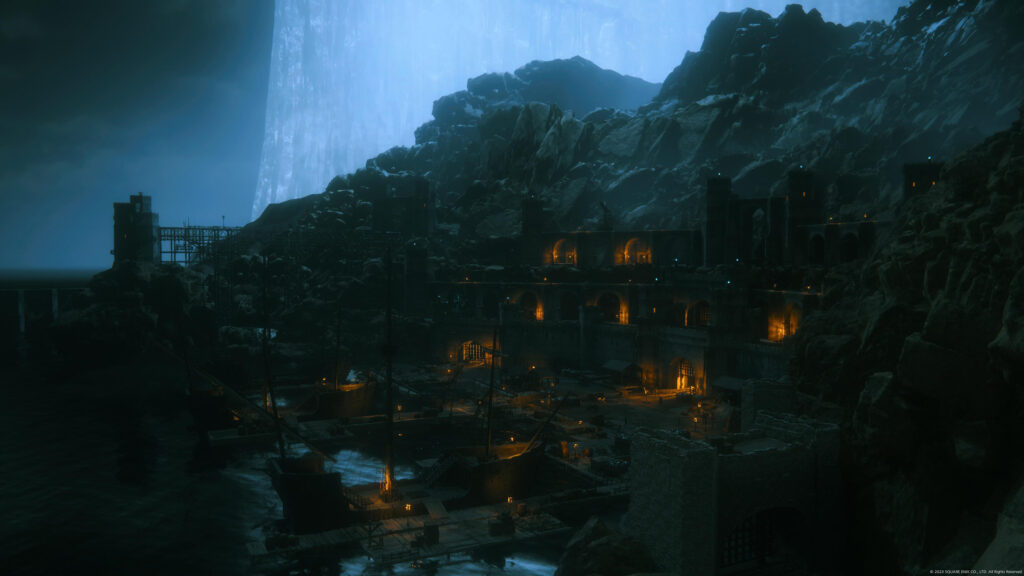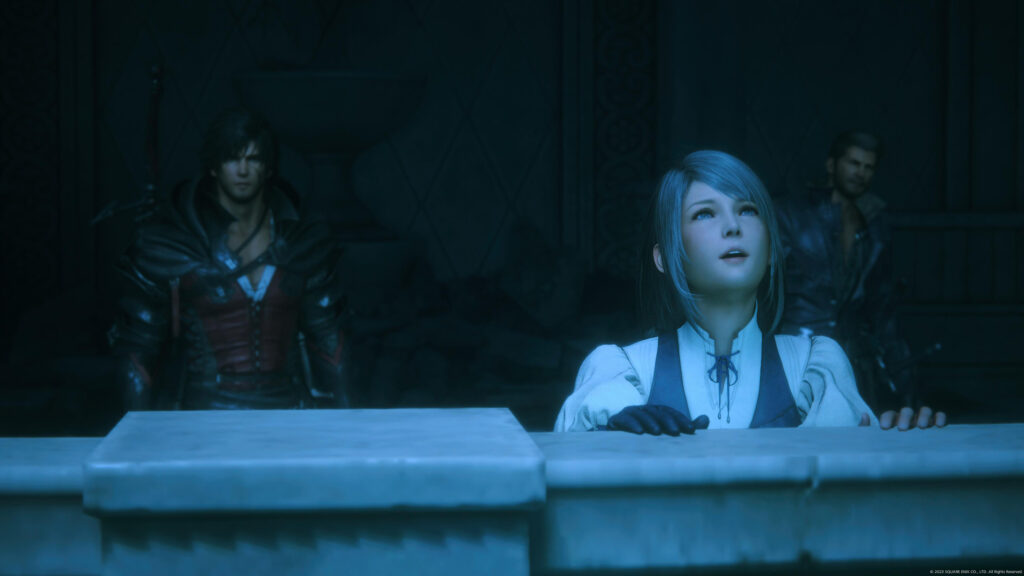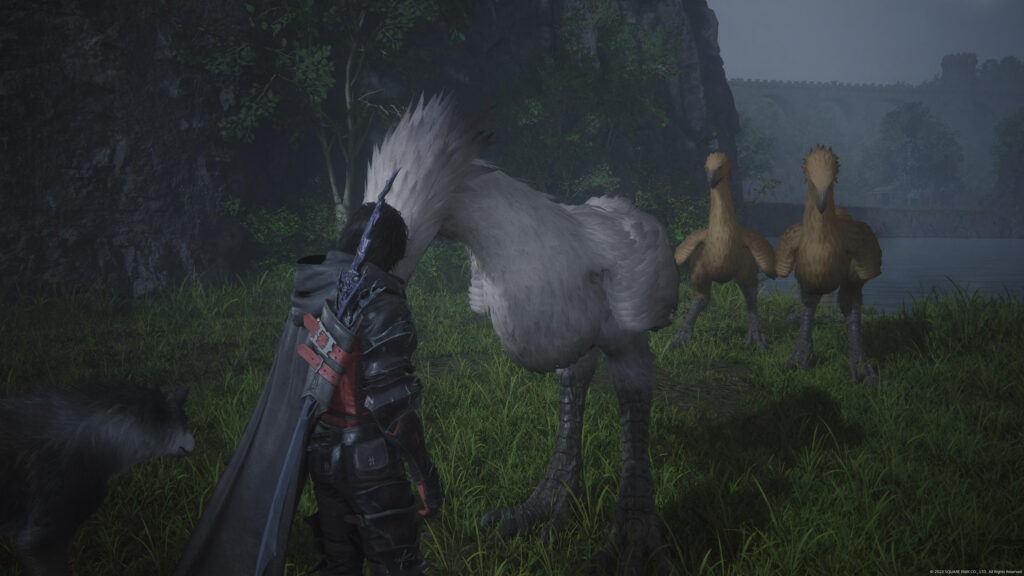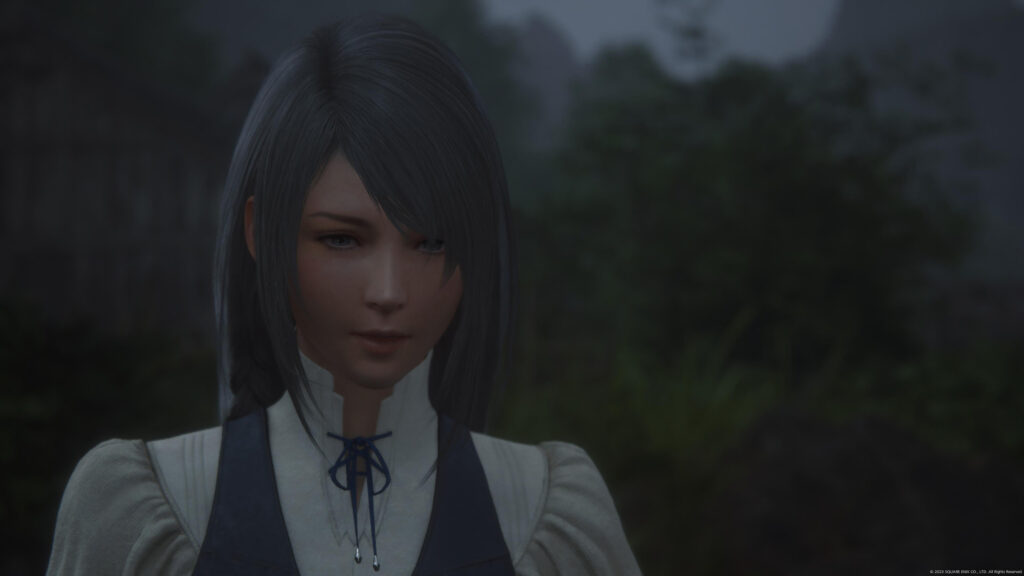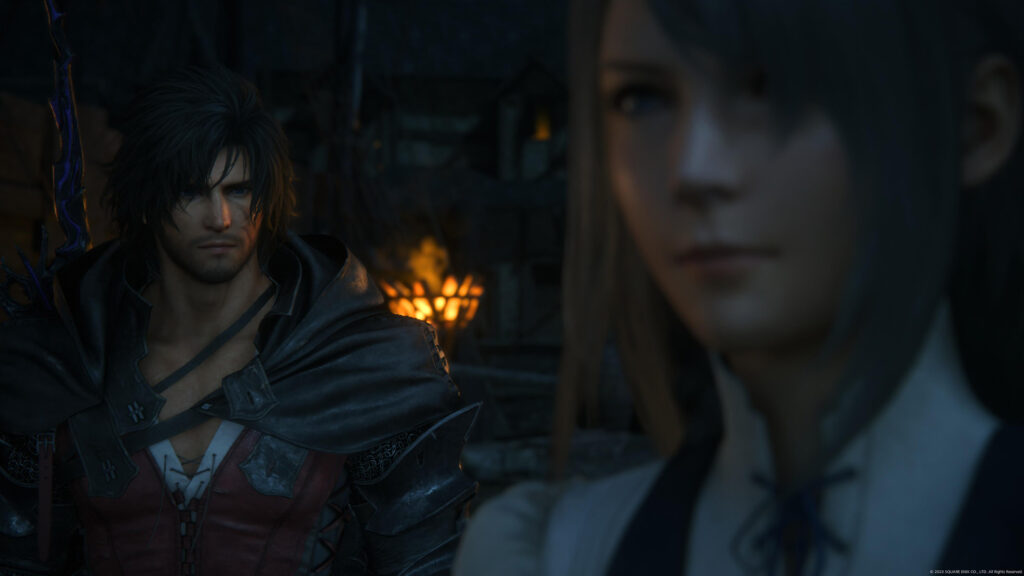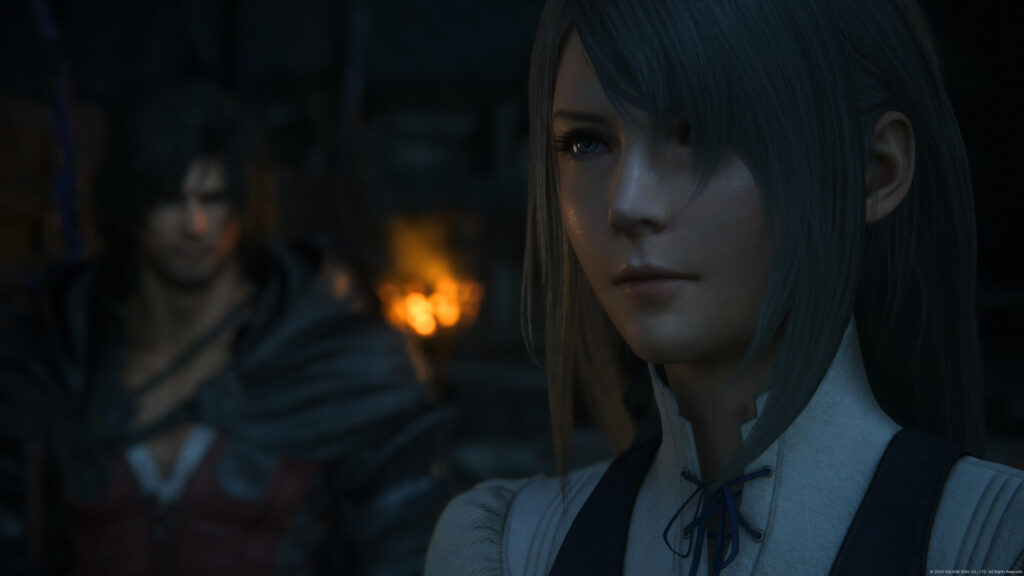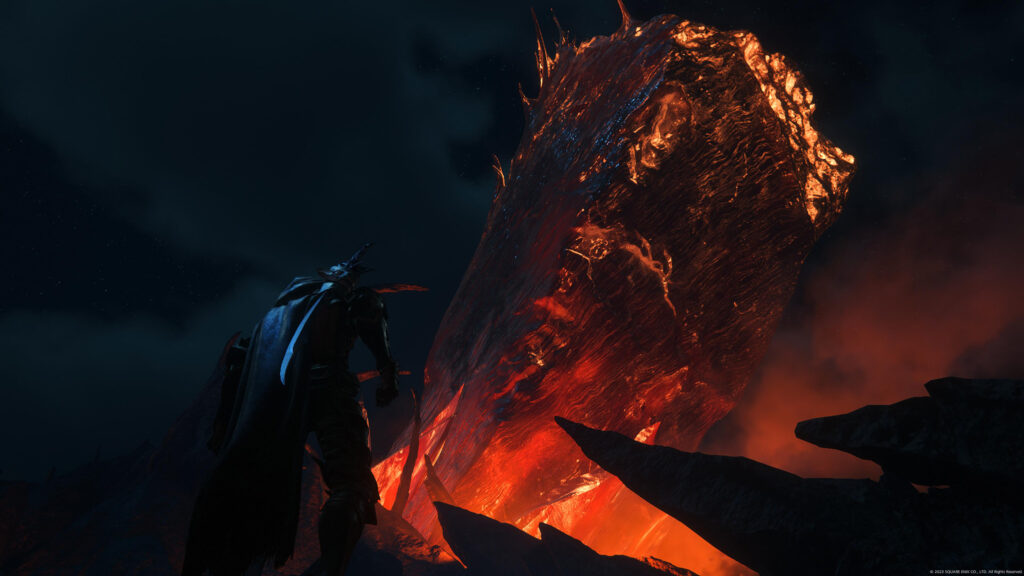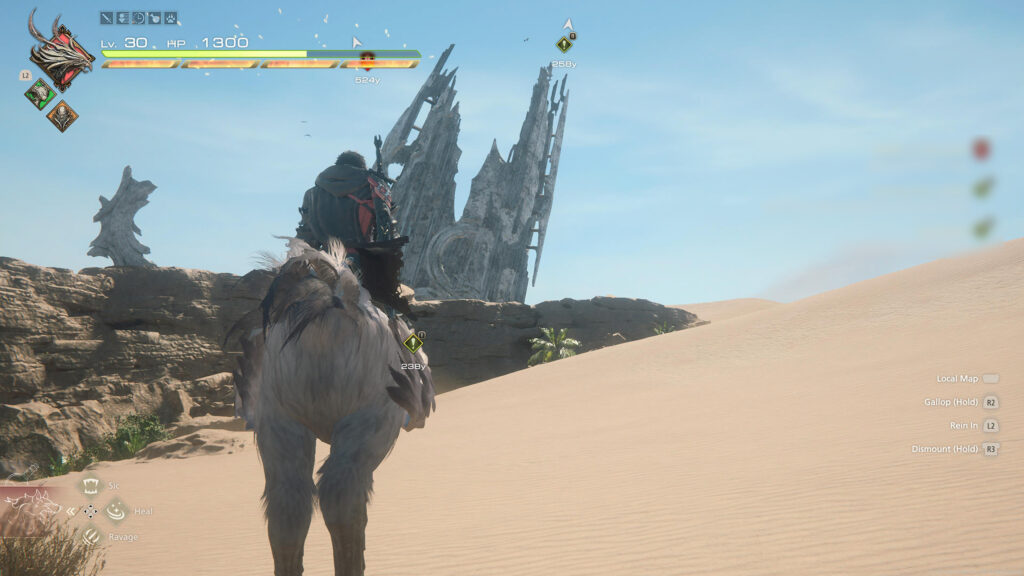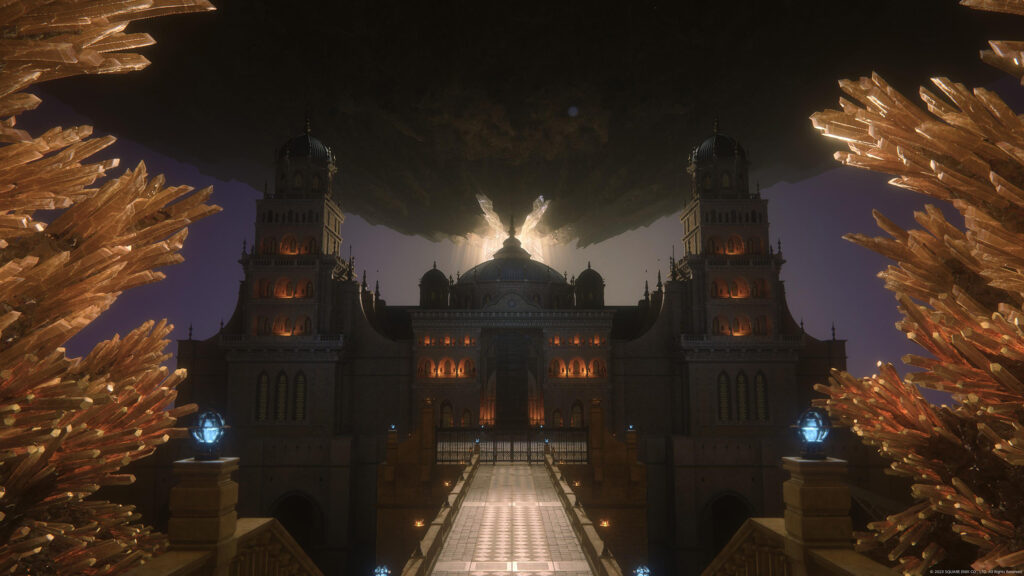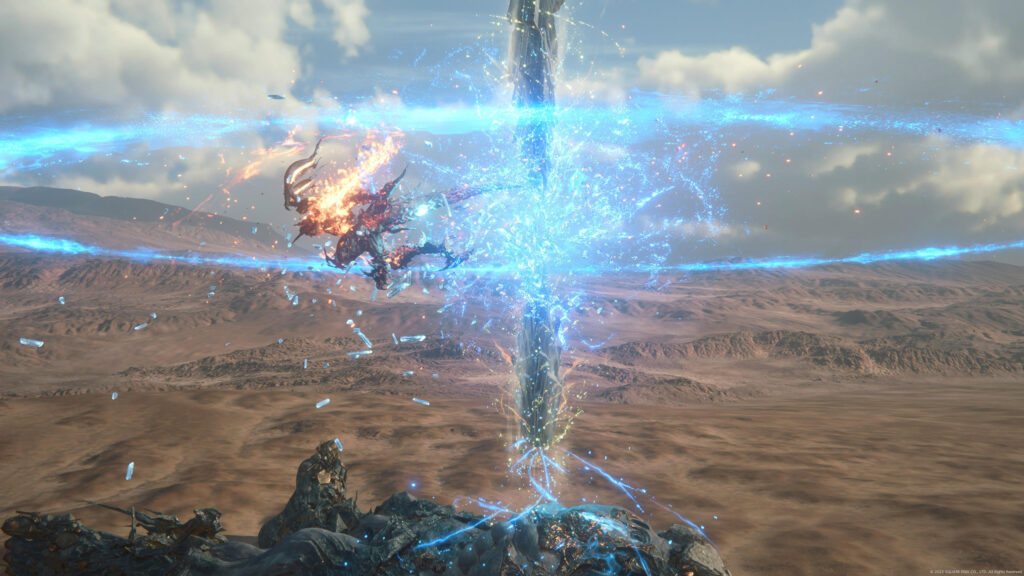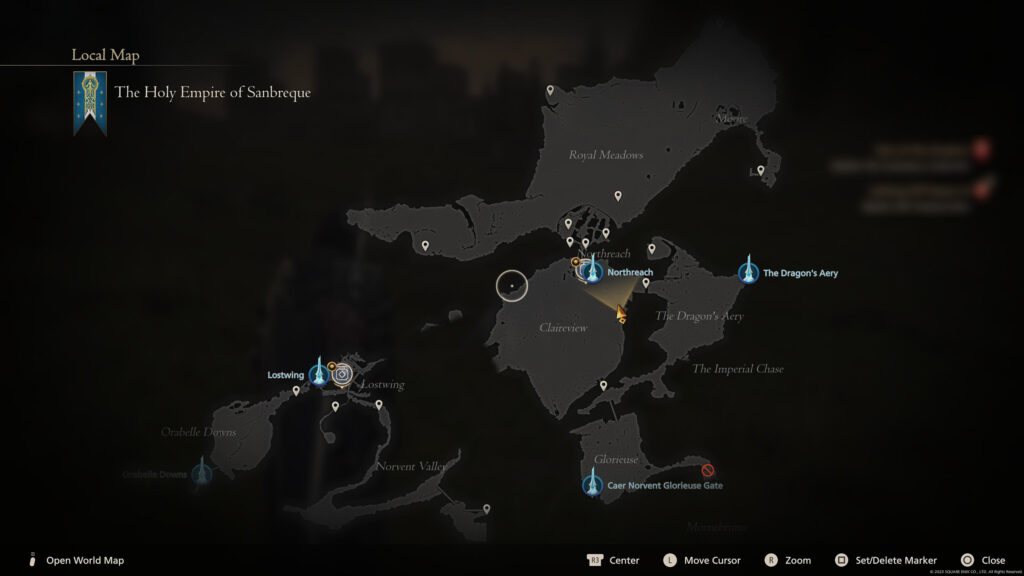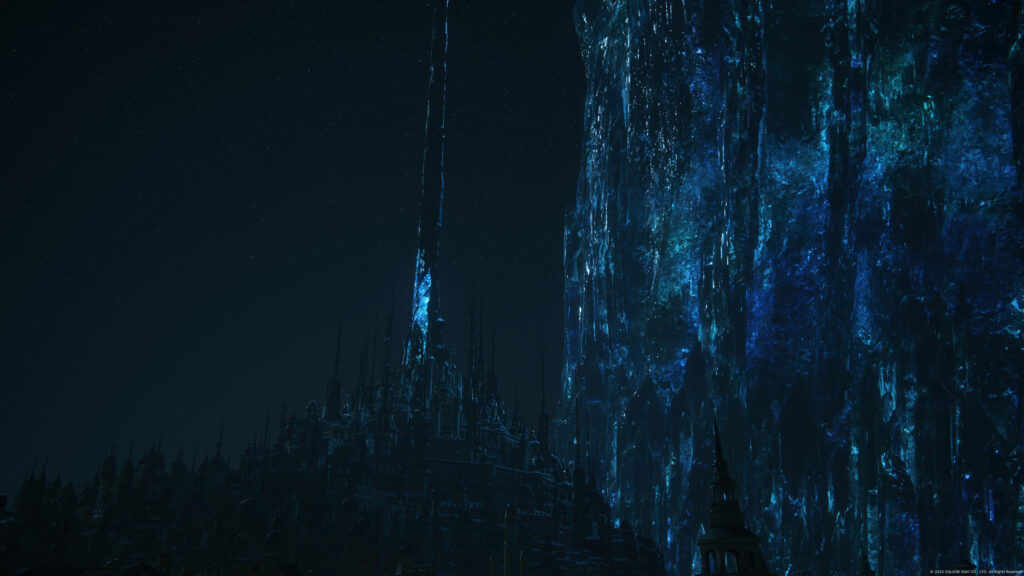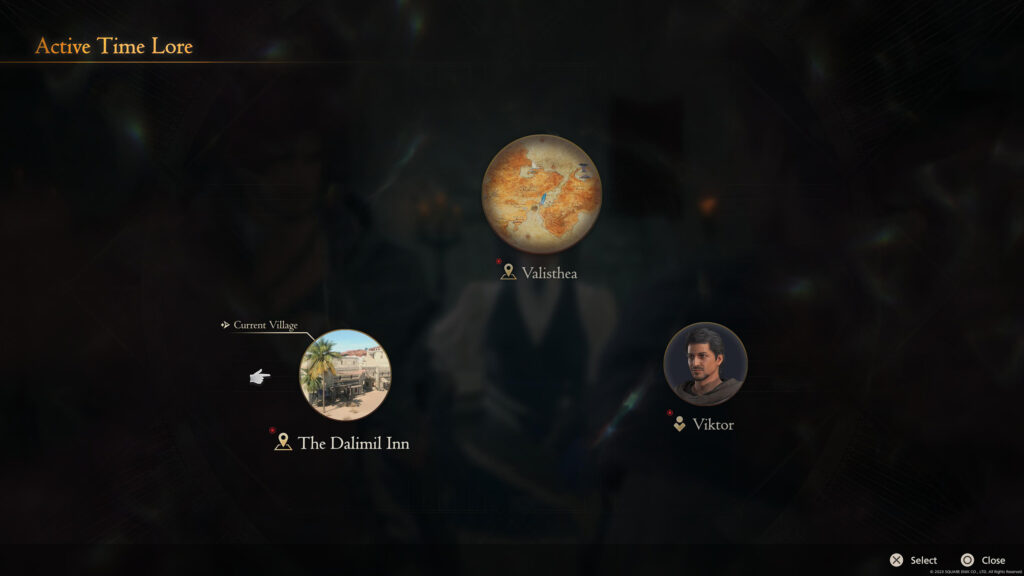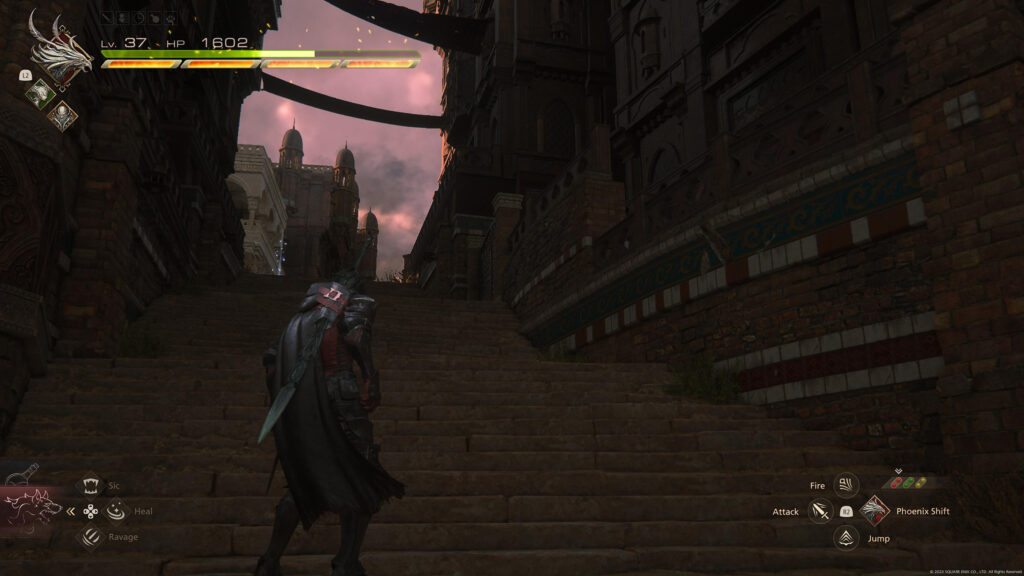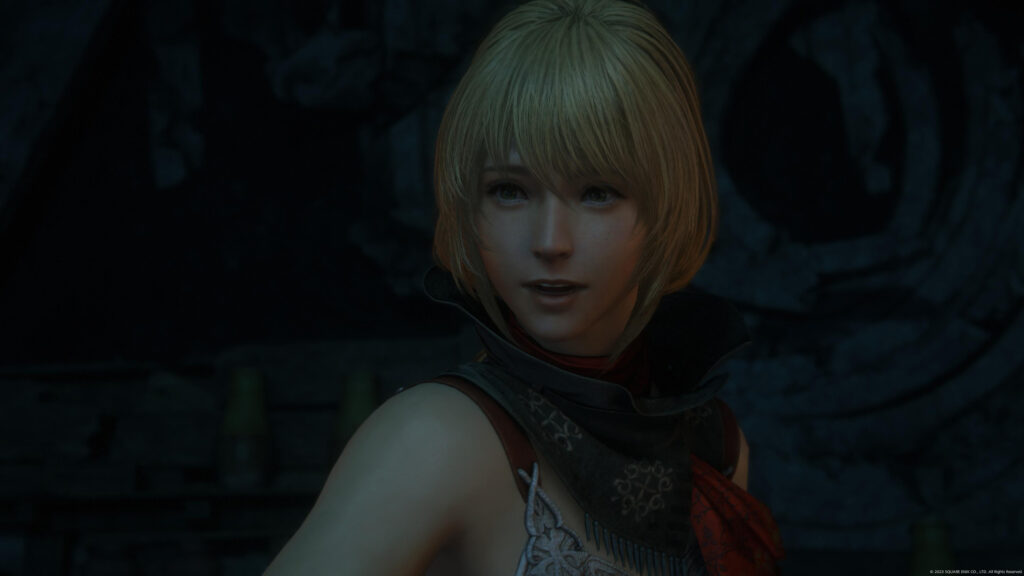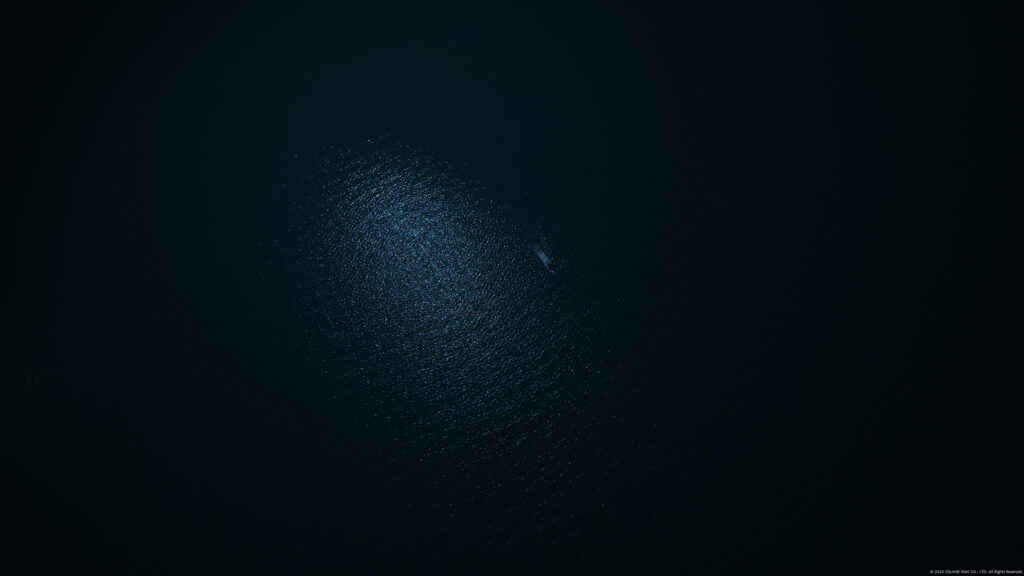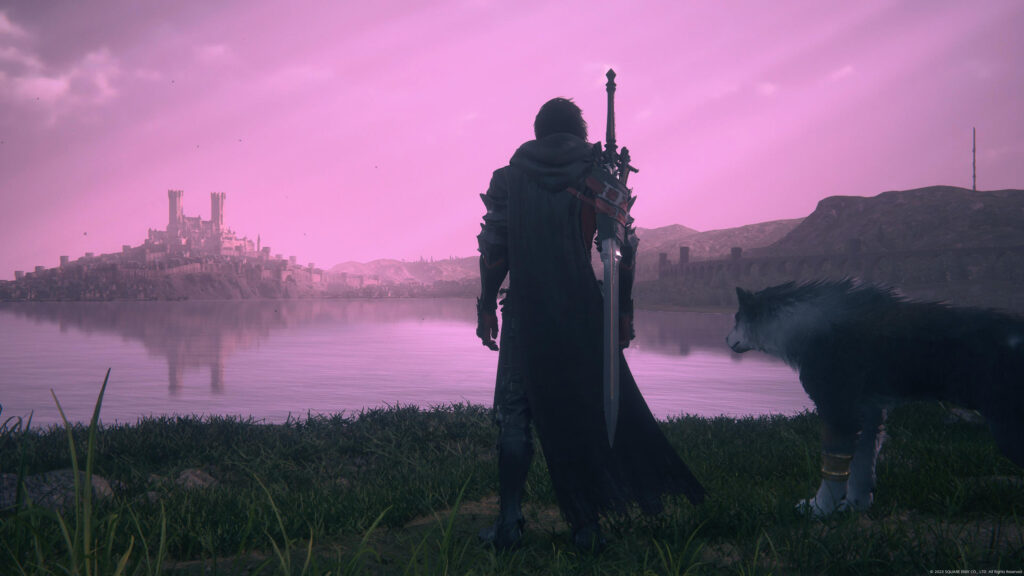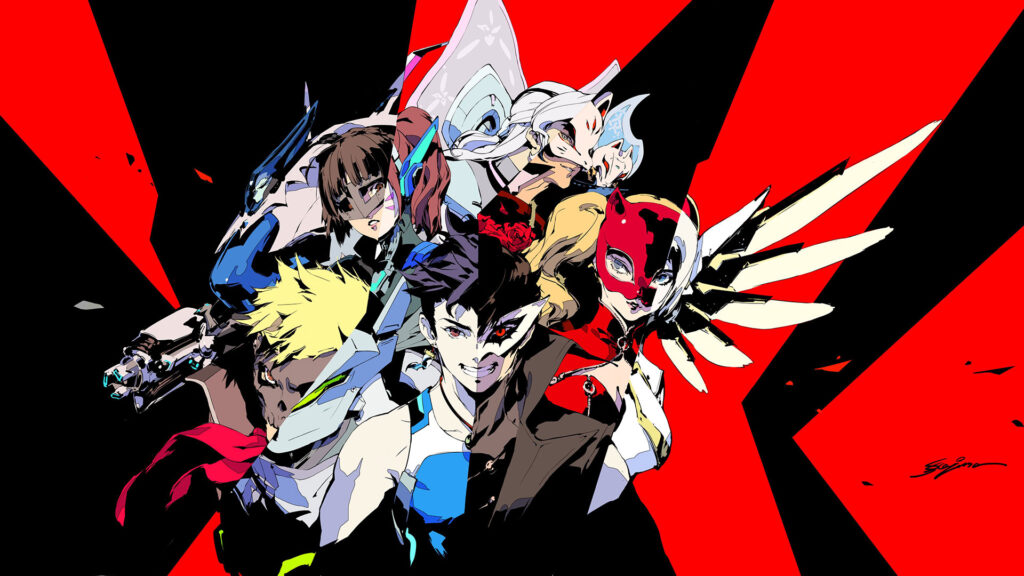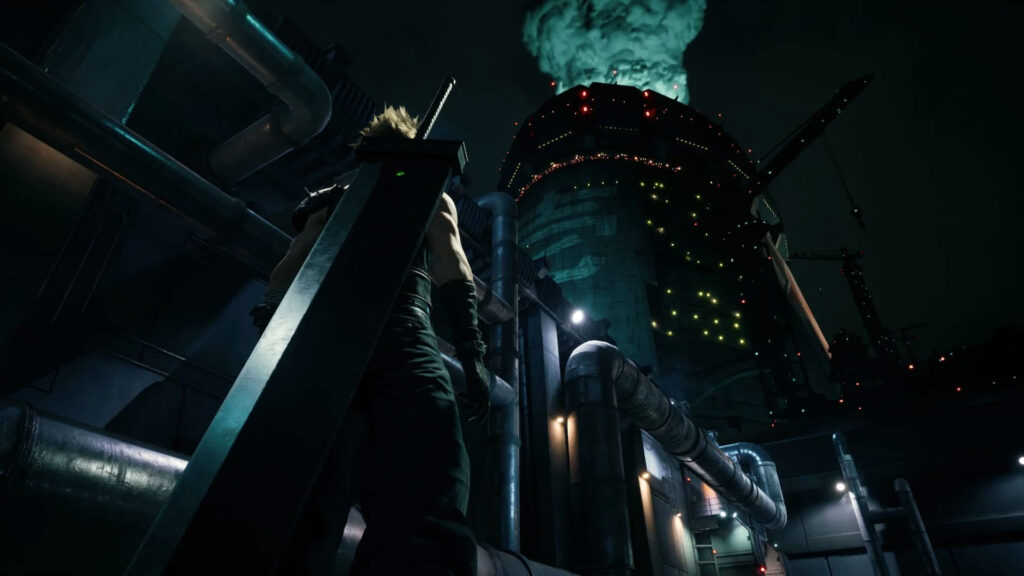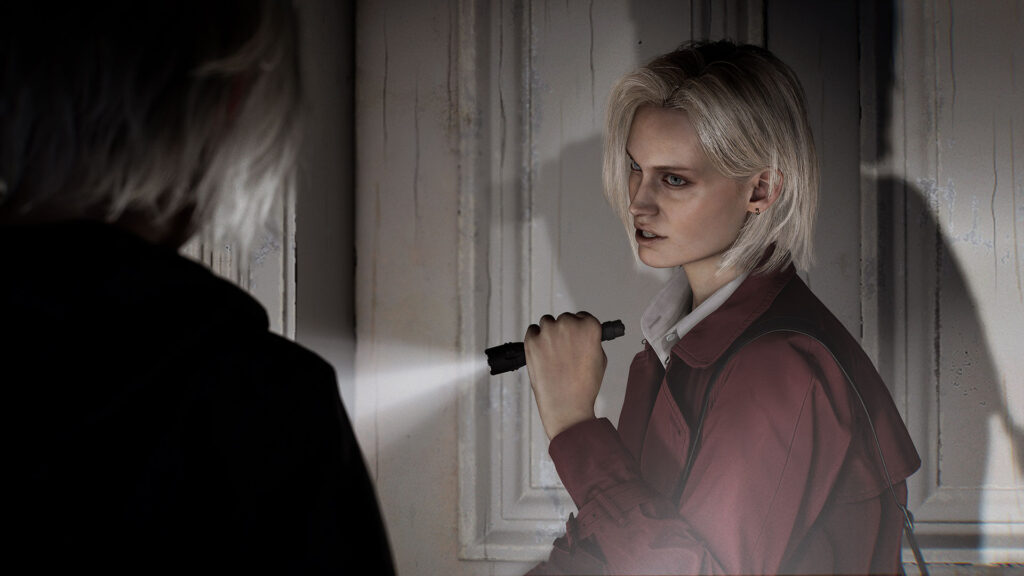Quick Verdict
Final Fantasy XVI offers some of the highest highs you’ll ever experience in gaming, along with some of the lowest lows. It seems that when Producer Naoki Yoshida described the game as a “white-knuckle rollercoaster ride in video game form,” he meant it literally. There are numerous monumental peaks in storytelling and presentation, but each time it comes crashing down at full speed before another slow, and sometimes painful, climb back up.
Final Fantasy XVI is full of memorable moments sandwiched between forgettable ones, featuring characters you’ll love and characters you won’t. But even after spending over 50 hours to complete the main storyline and all the game’s side quests, I didn’t hesitate to jump straight back in with New Game+, so I can experience Final Fantasy Mode. It’s an over-the-top adventure full of spectacles and annoyances, which pretty much sums up the essence of every Final Fantasy game ever made.
A Grand Adventure
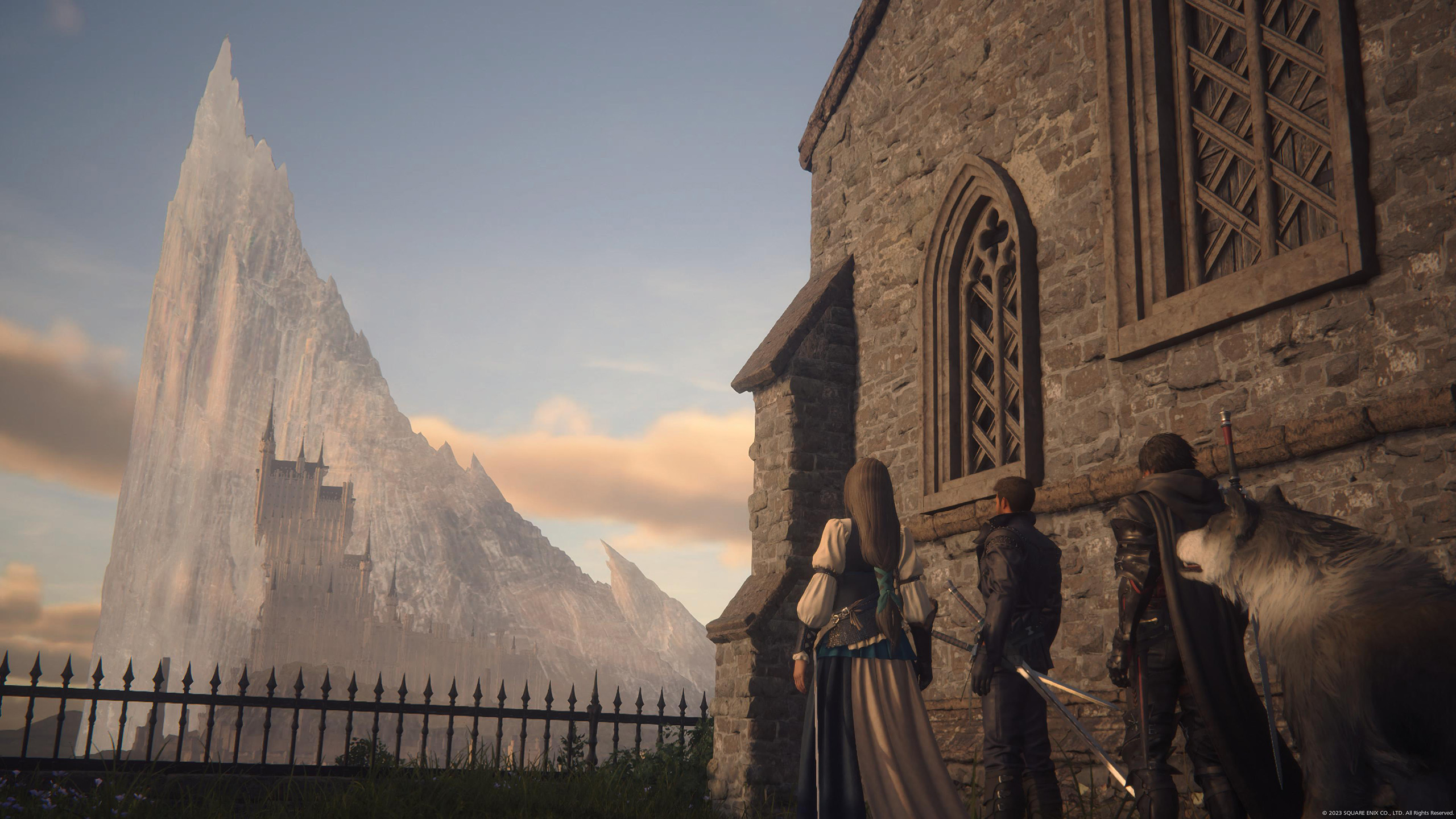
I have no problems admitting Final Fantasy is my favorite series in gaming. Not just one of my favorites, but the favorite. One of my earliest memories of gaming is reading an issue of Nintendo Power about the original Final Fantasy for the Nintendo Entertainment System. Even at that young age, I found the premise of the game so exciting and couldn’t wait to get my hands on it. I still recall the “optimal” party in the early 1990s: Warrior, Monk, Black Mage, and White Mage, which coincidentally over 30 years later, is a party comp you’ll run into while playing Final Fantasy XIV. I don’t know exactly how many times I played through the original Final Fantasy, but I may or may not have done a full White Mage party completion.
If something has been released with Final Fantasy in the title, I’ve owned it and played it. That includes SNES’s Mystic Quest, the Final Fantasy Legend and Final Fantasy Adventure games on Game Boy (which technically aren’t even Final Fantasy games), Dissidia fighting games, and every Theatrhythm release. I will even admit to downloading every mobile game, as horrible as some of them are. I also have a growing record collection of Final Fantasy soundtracks. Hell, there’s a review for Lightning Returns on this very site.
I say all this so you have a better understanding of where I’m coming from when I review Final Fantasy XVI. Having experienced the franchise in its entirety, I know just how bad it can get. After all, I did spend a regrettable amount of money on the original Final Fantasy XIV Collector’s Edition.
The Full Report, Warts and All

I went into Final Fantasy XVI with very high expectations. Creative Business Unit III is the team behind the resurrection of Final Fantasy XIV, which I have on my list of the best games I’ve ever played. I hold Final Fantasy XVI Producer Naoki Yoshida in high regard and believe he deserves a lot of respect for what he’s managed to do with Final Fantasy XIV. When I heard the team would be at the helm of a mainline Final Fantasy game, I couldn’t have been more excited, especially following the release of Endwalker. I did not really enjoy Final Fantasy XV and for me, it’s one of the weaker entries in the franchise. So I was ready for something new from someone who has managed to really transform an MMORPG into a love letter for the series.
For better or worse, Final Fantasy XVI plays like a single-player Final Fantasy XIV, down to the mundane fetch quests and having to “hand over” quest items. I actually laughed out loud during one of the game’s early side quests, where it had me delivering food — those who have played Final Fantasy XIV would understand why it’s humorous. I admit, I was initially confused on how I should feel about this. It seems like all I’ve ever wanted was an adventure with the quality of writing and storytelling found in Final Fantasy XIV, but not held back by the limitations of an MMORPG engine. That is, having to accommodate the possibility of having dozens of other players on the same screen as you. I just didn’t think Final Fantasy XVI would draw that much inspiration from Final Fantasy XIV.
In an interview published by Square Enix prior to the game’s release, Producer Naoki Yoshida referred to Final Fantasy XVI as a “white-knuckle rollercoaster ride in video game form.” Word for word, that could also describe the Endwalker experience in Final Fantasy XIV. After every significant event in that expansion that leaves your jaw on the floor, you’re suddenly relegated to something silly like dealing with carrots. While I find this type of pacing forgivable in an MMORPG, and one could argue it works well in Final Fantasy XIV, it was a frustrating experience with Final Fantasy XVI. I understand that these are designed to be stopping points so you can reflect on the events that just happened, but it’s just such a jarring plummet back to earth in a single-player experience.
But what will likely be the biggest deterrent for certain Final Fantasy fans is how light the RPG elements are in Final Fantasy XVI. Buying gear and crafting are basically thoughtless button confirmations, where you’re just looking for the biggest number. It’s a very underbaked system and offers very little customization, although some of the accessories are creative. Overall, gear and items offer very little to enhance the experience and feel like they were checkboxes that had to be ticked off in development with the least amount of work. That being said, some newcomers to the series actually welcome this change, and I think that was Creative Business Unit III’s goal.
Battle Scars

One of the most controversial features of Final Fantasy XVI is its battle system. The action-oriented combat is a far departure from the turn-based combat found in the classic games, and is even a different experience compared to the more recent Final Fantasy VII Remake and Final Fantasy XV. The comparisons to Devil May Cry are because Final Fantasy XVI’s combat director, Ryota Suzuki, has previously worked on various Capcom titles including Dragon’s Dogma, Monster Hunter, and Devil May Cry.
The combat system features three skills per Eikon, and by the midpoint of the game, you will have access to three different Eikons in your loadout. That means you are essentially switching between nine different skills, six of which have cooldowns and can be customized. The third for each set is a unique skill specific to each Eikon and cannot be changed. Once you master a skill on the board, you can mix and match between Eikons and their powers. For example, just because you have Garuda in your loadout doesn’t mean you have to include all of Garuda’s abilities. If you’ve mastered a Titan ability, for example, you can slot that instead of a second Garuda ability. The customization does offer some degree of depth, with skills having different cooldown durations and effects. One of the biggest flaws in the combat system, however, is the lack of elemental advantage or disadvantage. It was a bit strange to throw a fireball at a Bomb in a Final Fantasy game and not see it absorb the damage and heal. In addition, the game doesn’t focus much on buffs or debuffs, which really limits creativity on how you deal with enemies.
Arguably the biggest issue with the combat system is that players never feel the need to discover its full capabilities, because the game is too easy. I believe locking the more difficult Final Fantasy Mode behind New Game+ was a big mistake, because the standard experience is easy enough to spam the same few skills over and over until the enemy falls over. You don’t necessarily need to learn or take full advantage of the system in order to complete the game. And I understand that’s by design because the team wants Final Fantasy XVI to reach a much broader audience as an action game, but the inclusion of the accessories to automate combos and dodging should have been sufficient. At the very least, the game should have had another difficulty mode for the first playthrough, because it ultimately hurt what is a robust and competent combat system.

At the time of publishing, only 10.5% of players have unlocked this achievement, which suggests very few are bothering to learn the full potential of the combat system
The difficulty balance also works against the game because some fights feel like a slog if the player hasn’t bothered to learn how to optimize damage. In return, some of the epic boss fights can feel really long. It’s a sacrifice the team made so that the game is playable by a larger audience, but in a world where Elden Ring has sold over 20 million units worldwide, Final Fantasy XVI shouldn’t have gated its harder difficulty behind a complete playthrough of the game. I’m not even sure the argument for appealing to Final Fantasy XIV players holds any weight here, since the MSQ raids in that game are more difficult than pushing a few buttons in Final Fantasy XVI.
Essentially, you’ll have to make your own fun through your initial playthrough of the game, which I do believe is a flaw worth mentioning. There are a lot of different combinations of Eikonic abilities you can mix and match, combos to learn, and a robust combat system to master. It’s just the game gives you no reason to do any of it, until S-rank hunts or Final Fantasy Mode. Final Fantasy XVI gives you the tools to freely experiment, since you can reset all your ability points at any time. Sometimes, it’s just better when a game forces a player to have to learn something, especially when you have a combat system with a very low floor and a very high ceiling.
Ultimately, the standard mobs you encounter through your initial playthrough will offer very little threat. Some bosses will have some difficulty, but if you choose not to explore the combat system, the game will feel very repetitive and possibly even boring. The system is there so that shouldn’t be the case, you just have to force yourself to use it. It’s even more frustrating that this comes from the same team who has designed some of the best and most fun fights you can experience within the confines of a global cooldown-based MMORPG. While Final Fantasy XIV players might recognize some of the mechanics in Final Fantasy XVI, you’ll never feel threatened by death, even if you just stand there and take the hit.
A Spectacle for the Ages

Ever since the initial announcement of Final Fantasy XVI, the game’s Eikonic Battles have been a hot topic. This feature manages to surpass expectations with its bombastic, well-choreographed action sequences, which might currently be the best in the business. Yes, a large part of these sequences heavily rely on QTEs (quick time events), but I find this forgivable as there is a substantial amount of action before it all begins.
You’re participating in a very cinematic experience with these scenes, and it’s truly a celebration of Final Fantasy’s rich history with these iconic summons. It’s interesting how past games never really delved into or provided a significant backstory to the summons, such as Ifrit and Shiva, at least not to the extent found in Final Fantasy XVI.
Before the game’s release, Square Enix confirmed PlatinumGames’ contribution to Final Fantasy XVI. If you’ve played NieR:Automata, which I also have on my list of the best games I’ve ever played, it should be clear to you which portions of Final Fantasy XVI were likely the work of PlatinumGames. While it’s unconfirmed, I think it’s pretty evident that the time Yoko Taro spent working on the YoRHa: Dark Apocalypse quests and raid in Final Fantasy XIV influenced the development team of Final Fantasy XVI. This thought isn’t too far-fetched, considering Yoko Taro is credited in Final Fantasy XVI.
History Repeating

Outside of combat, you’ll naturally be exploring the world of Valisthea. As I mentioned earlier, the gameplay of Final Fantasy XVI is quite similar to that of Final Fantasy XIV, which extends to the dungeon design. If you’ve ever done a four-man dungeon in Final Fantasy XIV, you know the formula. It’s very linear with some trash pulls in between boss fights, until you reach the end, fight the final boss, and you’re done. That carries over to Final Fantasy XVI’s “dungeon” design, where there are very few deviations from the path you need to take.
Now, I’m suffering from open world fatigue, especially after playing The Legend of Zelda: Tears of the Kingdom, so I welcomed Final Fantasy XVI’s linear design with open arms. I’ve always believed that you shouldn’t have an open world game if the open world isn’t engaging. To me, there are very few games that truly nail the open world experience, Elden Ring being one worth mentioning. Final Fantasy XV felt wholly empty for me and in that case, I would have preferred a more linear design. But that’s just me, and if a linear journey bothers you, Final Fantasy XVI will probably be very bothersome.
That being said, when you start doing hunts, late-game side quests, or searching for Chronoliths, you’ll find that certain areas of the world are quite large and interconnected, so you’ll spend some time exploring. But like my complaints with the combat system, the game doesn’t give you a very good reason to go exploring. Other than looking for your hunt mark or a Chronolith, you won’t stumble across anything memorable off the beaten path.
What I did enjoy about Valisthea is how alive it feels in certain areas. One of my biggest complaints about God of War: Ragnarök was how empty the world felt since you hardly ran into another living being that wasn’t an enemy. When you are in the towns of Valisthea, you’ll overhear conversations from NPCs and there are even some very entertaining and humorous dialogue that I feel most players will miss out on. The environments are varied and visually stunning – so much so that I took over 100 screenshots during my initial playthrough. Again, if you’ve played Final Fantasy XIV, you’ll notice the inspiration. It resonates as a modern rendition of the areas outside the three initial zones of Ul’dah, Gridania, and Limsa Lominsa.
Under the Moonlight
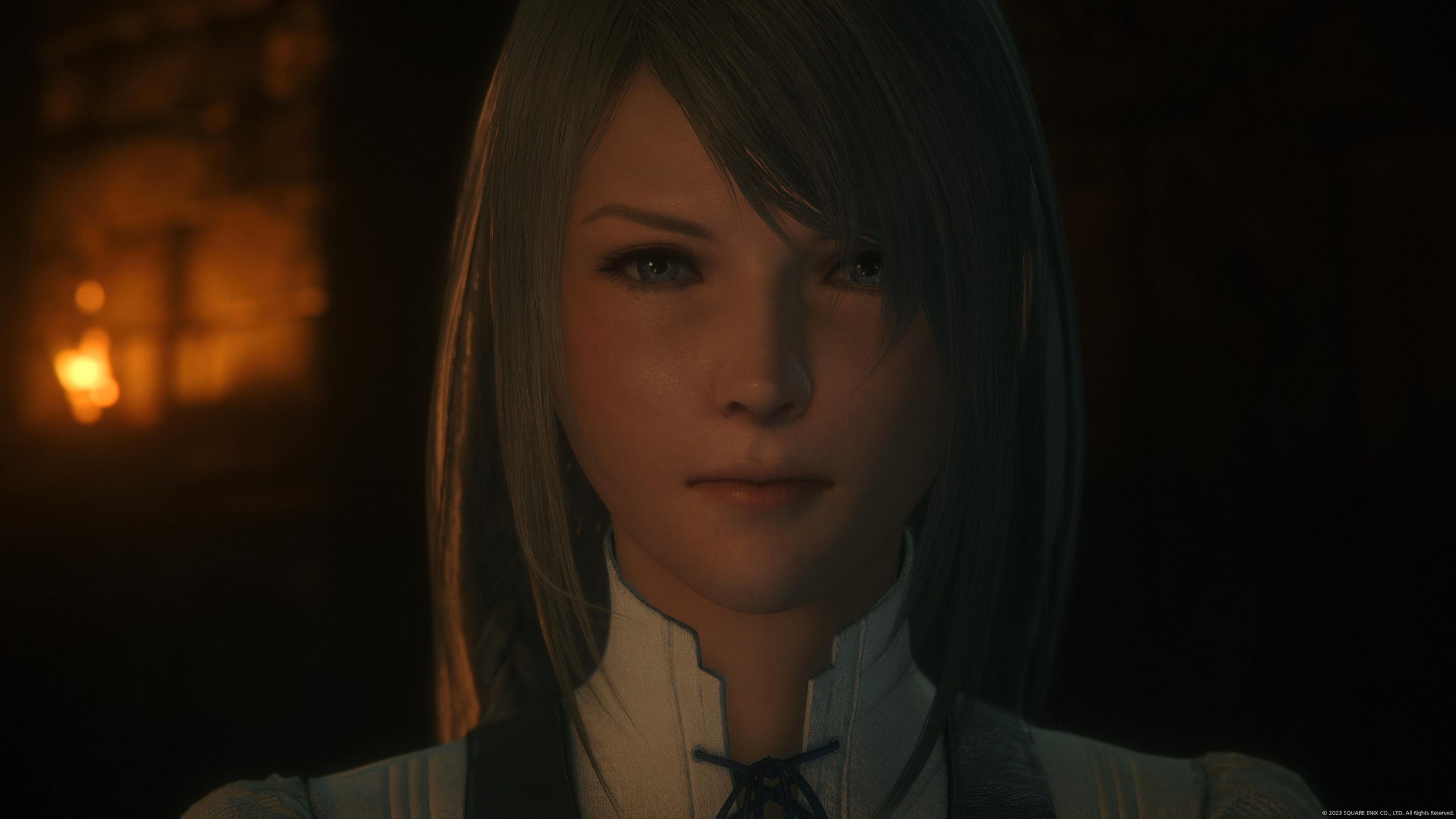
For many, what defines a Final Fantasy game are the characters. Not just the main ones, but others who join you on your journey. The Biggs and Wedges of the world, you could say. After all, Final Fantasy has birthed some of the most iconic characters in the entire video game history, such as Aerith and Vivi. So, how does the rest of the cast in Final Fantasy XVI fare?
For starters, the game bucks tradition with uncontrollable party members (although FFXV was similar at launch). You can only issue commands to your faithful hound, Torgal, and even then, the options are fairly basic. You won’t be setting up flashy combos with Jill or commanding Cid to take aggro from you. There isn’t even that much banter while traveling in the overworld or while fighting. But despite all that, many of the characters you meet through your journey as Clive Rosfield will stick in your mind and heart for a very long time.
Like all Final Fantasy games, some characters are better written than others, but I do believe this aspect of the game is very subjective. Some players may feel disappointed with the character arcs of certain characters, while others might not find it as problematic. I do believe there is someone for everyone to love within the cast, even if it’s a villain. Except for Clive’s mom. No one should love Clive’s mom.
Brotherly Love
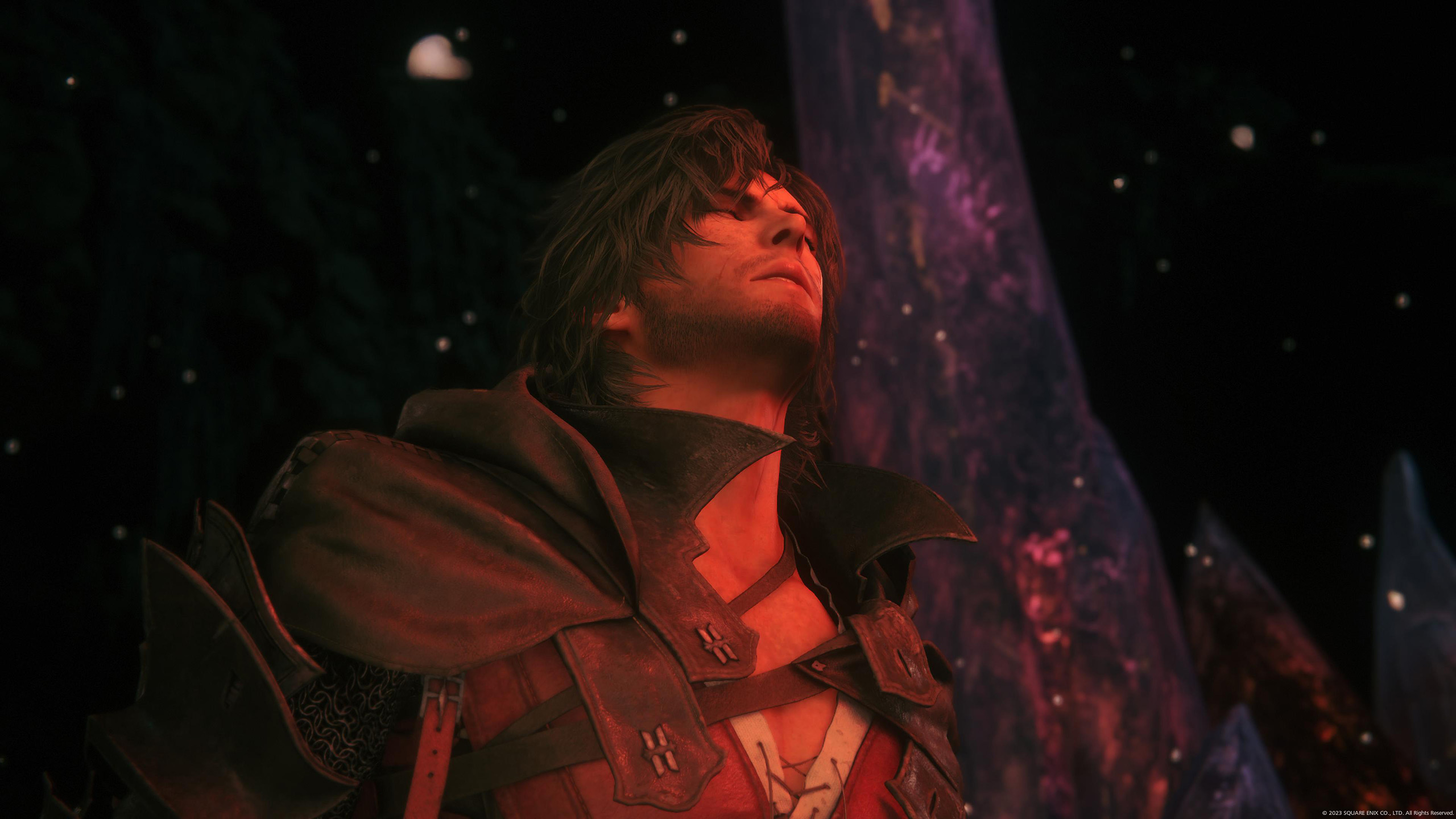
However, at the core, Final Fantasy XVI is the story of Clive Rosfield and you will have to be sold on the character to stay truly engaged throughout the journey. If you’ve played the demo, you’ll know the importance of Clive’s brother, Joshua, in setting up the foundation of Final Fantasy XVI’s story. Overall, Clive is a well done protagonist, arguably one of the best the Final Fantasy series has ever seen.
He certainly fits the mold of a main Final Fantasy character, with his brooding personality, but a lot of credit needs to go out to actor Ben Starr for his performance. You’ll feel Clive’s pain and happiness through Starr’s acting and if you can connect with his story, you’ll really enjoy the game. Clive’s journey is a grounded experience that explores a multitude of themes that previous Final Fantasy games have explored. But I’d argue that Clive’s story does it best, because it’s so focused on his experience, his actions, and his emotions.
Fire and Blood
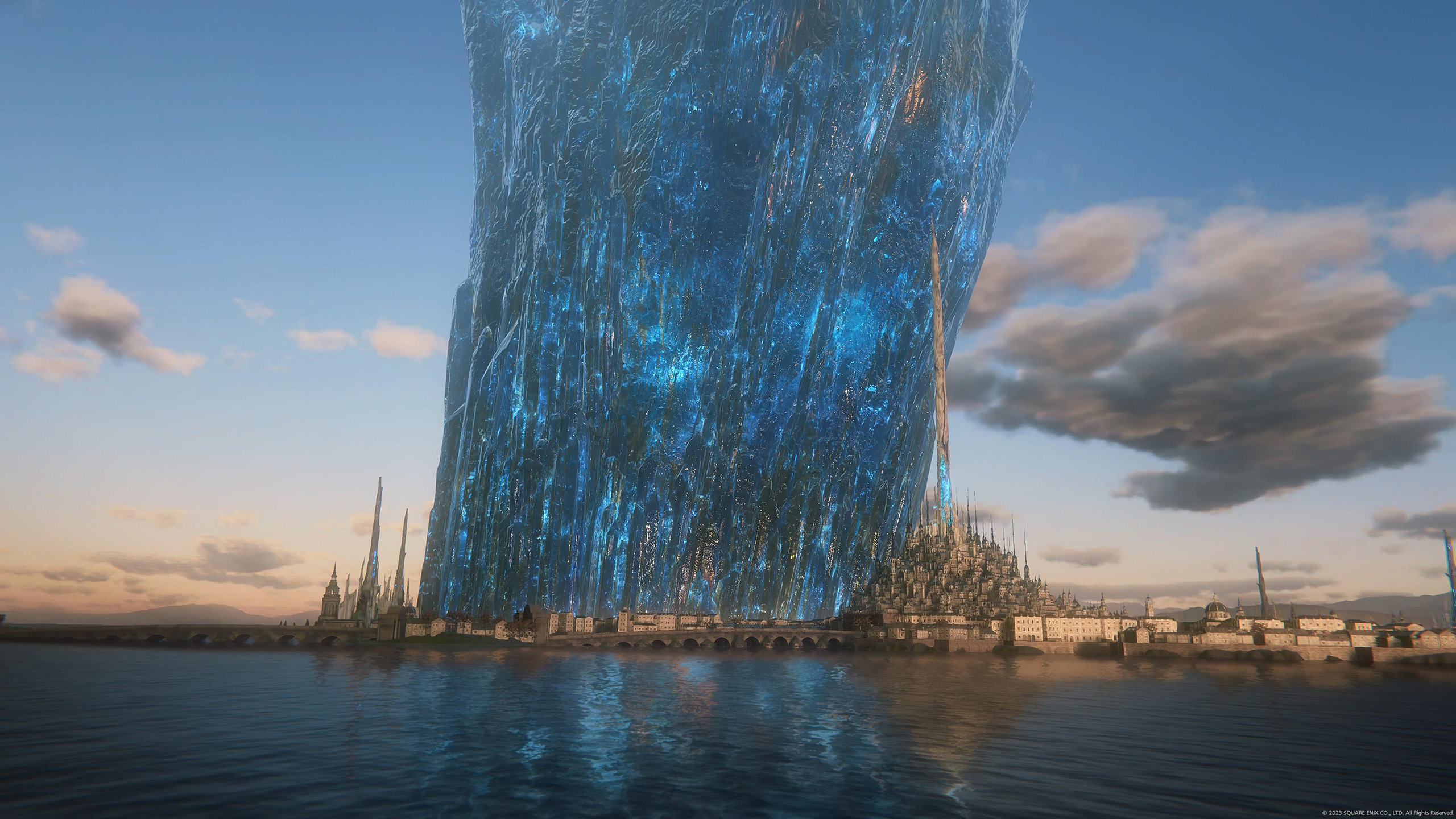
For others, what makes a Final Fantasy game a Final Fantasy game is the story. Kazutoyo Maehiro, serving as the creative director and lead writer for Final Fantasy XVI, is credited as the Main Scenario Writer for both Final Fantasy XIV: A Realm Reborn and Final Fantasy XIV: Heavensward. When Heavensward first released, it was almost groundbreaking for the MMORPG genre because of how fantastic the storytelling was.
However, since then, most Final Fantasy XIV players would likely rank Heavensward as the third-best expansion of Final Fantasy XIV, or the second worst, depending on how you view the glass. Most would say Endwalker tops the list, followed by Shadowbringers, Heavensward, and then Stormblood. I went into Final Fantasy XVI having very high expectations for the story, but much of that was due to how perfect I found Endwalker to be. To put things into context, Natsuko Ishikawa served as the Lead Story Designer for Endwalker, was the Main Scenario Writer for Shadowbringers, and oversaw the design for the post-patch content from 5.1 to 5.5. Unfortunately, Ishikawa isn’t credited anywhere in Final Fantasy XVI which confirms she did not contribute to the project, and I think it shows.
Now for those who have never played Final Fantasy XIV, this means nothing. The story and quality of writing, to me, is on par with what’s in Heavensward. Again, at the time of Heavensward’s release, it was heavily praised for its story with many saying it was near-perfect. But what has made Final Fantasy XIV so successful is how the team has managed to push that bar in terms of storytelling and character development over the years. Throughout my journey with Final Fantasy XVI, I kept anticipating the same emotional high I experienced with Endwalker, but it never came. Looking back, I probably shouldn’t have had that expectation, because Final Fantasy XVI is a single story condensed in 50 hours of playtime, while Final Fantasy XIV has had hundreds of hours and years to build on its world.
However, one aspect the story handles very well is avoiding the introduction of too many characters or plotlines in parallel. It never gets overwhelming, and the addition of the Active Time Lore feature might be one of the best parts of Final Fantasy XVI. During any event or cutscene, you can hold down the DualSense’s Touchpad. This action brings up Active Time Lore, providing more information on the characters in the scene and the areas being discussed. It’s absolutely not necessary to consult the feature to fully understand the story, but for those who forgot a certain name or place, or just want to know more about the world of Valisthea, it’s a very helpful tool. I hope this feature becomes a staple in future Final Fantasy games. It’s surprising that it has taken this long for such a feature to be included.
Two Sides of a Coin
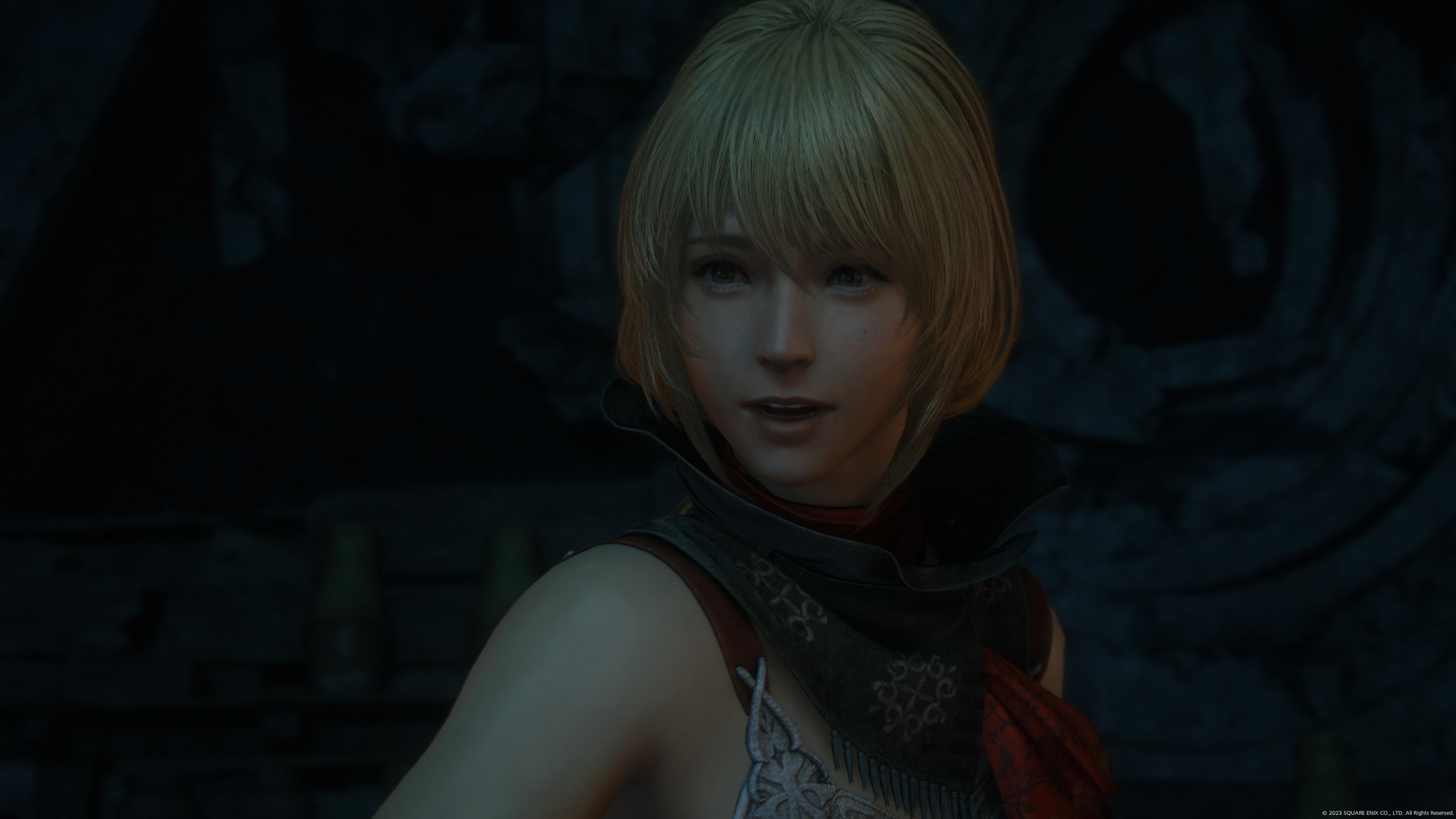
Often when I judge a game, I attempt to figure out what the development team’s goal was for that game. From there, I try to determine just how successful they were in achieving that vision. Now, without getting confirmation from the developers, this remains speculative, but there are times it’s obvious the type of game a team wanted to make. With Final Fantasy XVI, I believe the intent wasn’t to create a game that is “binged.” I feel like it hurts the overall experience if you’re sitting down and playing Final Fantasy XVI for 14 hours straight (and yes, that’s something I did).
As I mentioned before, I believe these highs and lows throughout the story, are designed to be natural stopping points for players to take a break. There are parts of the game that feel like filler, especially after reaching a peak in the storyline, only to have the game divert you to something akin to a fetch quest. In my opinion, taking a break after these climactic points makes resuming the game less frustrating. Yes, it can be argued that it’s a flaw in the game’s design, but I do think it’s intentional. This method of storytelling is one that Creative Business Unit III has been doing for very many years and I think it works for many people who happen to take a break at that natural stopping point.
Regarding side quests, the game admittedly begins with some rather dull ones. And it’s a shame really, because the later ones are very well done with some of the most emotional and memorable moments you’ll experience in Final Fantasy XVI. If you decide to play Final Fantasy XVI, I highly recommend doing all of the game’s side quests, even if some seem mundane. The payoff is well worth it later on, even if the side quests show up at the worst times. Besides, if there’s a singular thing that appears in every Final Fantasy game, it’s having to do trivial tasks while the end of the world is looming.
The high points of Final Fantasy XVI are so exceptional, that the “normal” events throughout the rest of the game seem relatively mundane in comparison. But in actuality, it’s probably on par with other games, like Hogwarts Legacy or even God of War. In a way, it is a victim of its own success, because you know it can be that good, it just isn’t that good all of the time.
The Rising Chorus
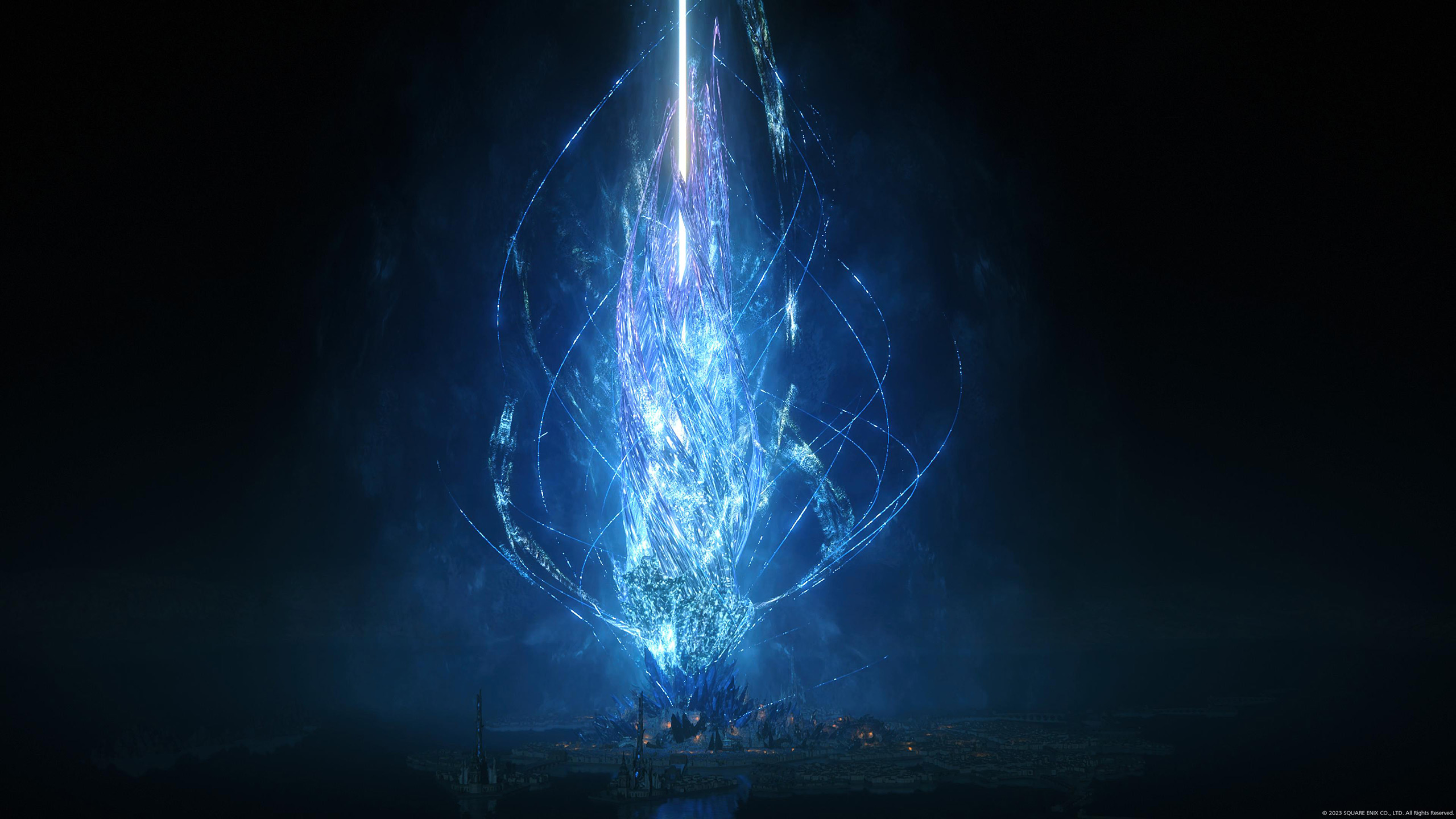
As they say, you save the best for last. For that, the honor goes to none other than Masayoshi Soken. While Final Fantasy XVI certainly has its flaws, I firmly stand by the claim that its soundtrack is flawless. Soken has somehow managed to outdo himself expansion after expansion in Final Fantasy XIV, so I expected nothing but a masterpiece for Final Fantasy XVI. He managed to deliver all that and more.
Creative Business Unit III puts a lot of importance into its musical themes. There have been discussions where Ishikawa and Soken have gone back and forth, extensively, to make sure the music matches the dialogue. Longtime fans of Final Fantasy are in for a real treat with this game’s soundtrack, because Soken masterfully weaves in classic themes at just the right moments. From the crystal overture that has evolved with every entry to leitmotifs from other Final Fantasy games, it really is a fitting tribute to all the beautiful music we’ve associated with the franchise.
Some of my most emotional moments in Final Fantasy XVI were not necessarily tied to the characters or story beats, but were instead stirred when a new rendition of the crystal theme played. It’s the culmination of decades of exploring Final Fantasy worlds condensed into a recognizable musical theme. With this soundtrack, Soken not only pays homage to all the composers who preceded him but also lays the groundwork for an exciting future.
Hope’s Confluence

I hadn’t planned to join the “What makes a Final Fantasy game a Final Fantasy game” debate, which I find somewhat silly. Is it the characters? The world building? The story? The brooding protagonist? Moogles? Chocobos? Cactaurs? Tonberries? Morbols? Flans? Bombs? Cinematic cutscenes? Summons, espers, or eikons? Or is it about the community inevitably being divided over the latest entry because it’s not a “real” Final Fantasy game?
Producer Naoki Yoshida’s now-famous response to this question was: “My answer is simple. You need to have the best story, you need to have the best graphics, you need to have the best battle system, you need to have a lot of content, you need to have the Chocobos, you need to have Moogles, you need to have great sound, and that makes a Final Fantasy. And if you’re missing even one of them, the fans will hate you forever.”
For me, it’s none of that. It doesn’t matter if it’s a mainline entry, an MMORPG expansion, or a spinoff fighting game, if the game has the words “Final Fantasy” in the title, there’s an underlying story of hope. And no, I don’t mean the character from Final Fantasy XIII. The Final Fantasy series has always been about instilling hope in a way that only a Final Fantasy game can. Be it the transformation of Dark Knight Cecil into a Paladin, the World of Ruin in Final Fantasy VI, the entire chapter titled “In Search of Hope” in Final Fantasy VII Remake, or Tidus and Yuna’s memorable journey. Of course, you can find the premise of hope in nearly every aspect of Final Fantasy XIV and its expansions.
Final Fantasy XVI embodies the hope for a brighter future, and, fortunately, the future of the Final Fantasy series is a bright burning star.
Final Fantasy XVI was released on June 22, 2023. This review is based on a purchased retail copy of the game on PlayStation 5. While FullCleared does have affiliate partnerships, they do not influence our editorial content. We may, however, earn commissions for products purchased via affiliate links.

